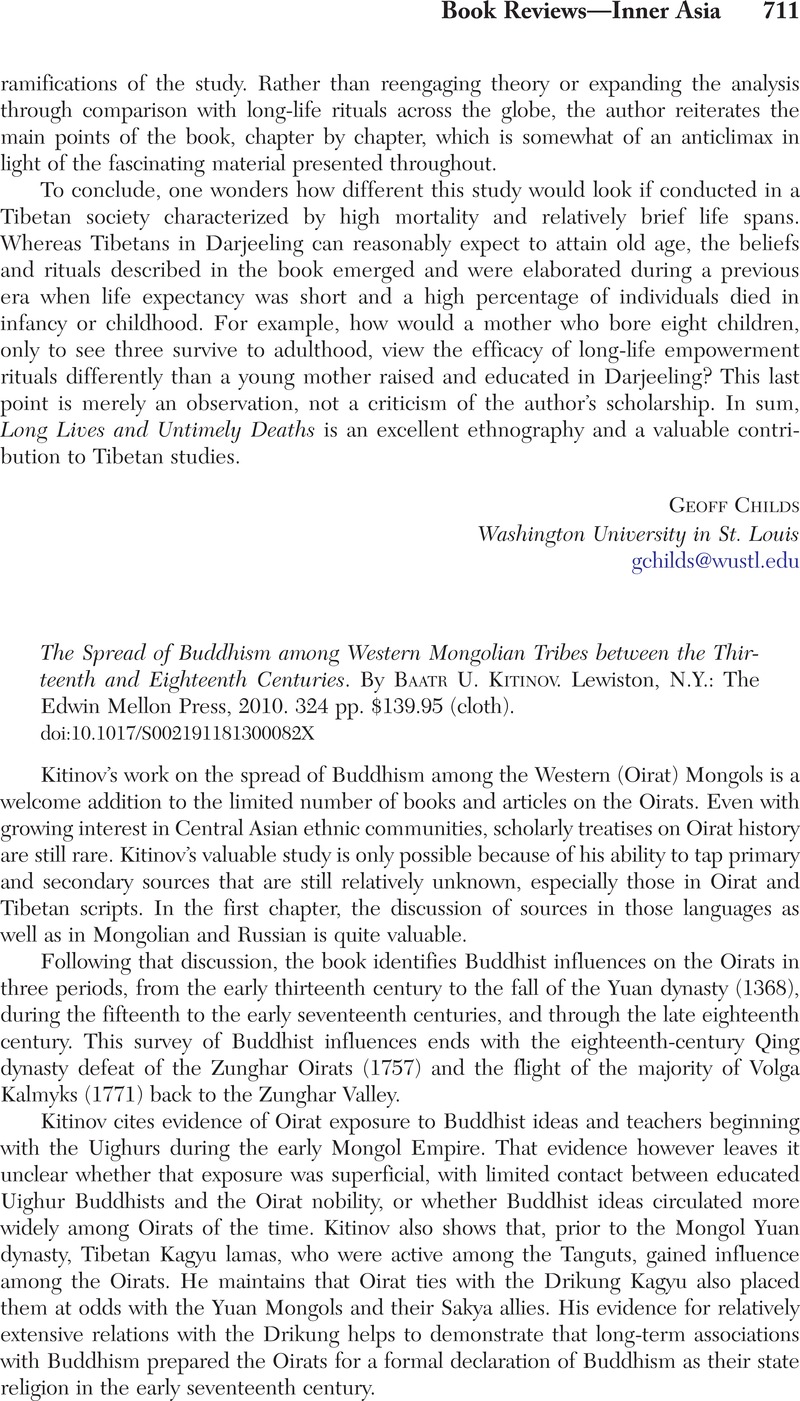No CrossRef data available.
Published online by Cambridge University Press: 19 September 2013

9 Elverskog, Johan, Buddhism and Islam on the Silk Road (Philadelphia: University of Pennsylvania Press, 2010), p. 197CrossRefGoogle Scholar.
10 Elverskog, 2010, p. 202; Perdue, Peter, China Marches West: The Qing Conquest of Central Eurasia (Cambridge, Mass.: Belknap Press of Harvard University Press, 2005), p. 59Google Scholar.
11 Sneath, David, The Headless State: Aristocratic Orders, Kinship Society, and Misrepresentations of Nomadic Inner Asia (New York, Columbia University Press, 2007), p. 40CrossRefGoogle Scholar.
12 Atwood, Christopher, Encyclopedia of Mongolia and the Mongol Empire (New York: Facts on File, 2004), p. 621Google Scholar.
13 Elverskog, Johan, The Jewel Translucent Sutra: Altan Khan and the Mongols in the Sixteenth Century (Leiden: Brill, 2003), p. 15Google Scholar.
14 Crossley, Pamela, A Translucent Mirror: History and Identity in Qing Imperial Ideology (Berkeley: University of California Press, 2002), pp. 239–40Google Scholar.
15 Atwood (2004, p. 618), as all other scholars of Oirat history, gives the personal name of Zaya Pandita as Namkhai-Jamtsu or Namkhaijamts.
16 Radnabhadra, Saran Gerel, in Oiratica, Bibliotheca XII (Ulaanbaatar, Tod Nomin Gerel Tov, 2009), p. 84Google Scholar.